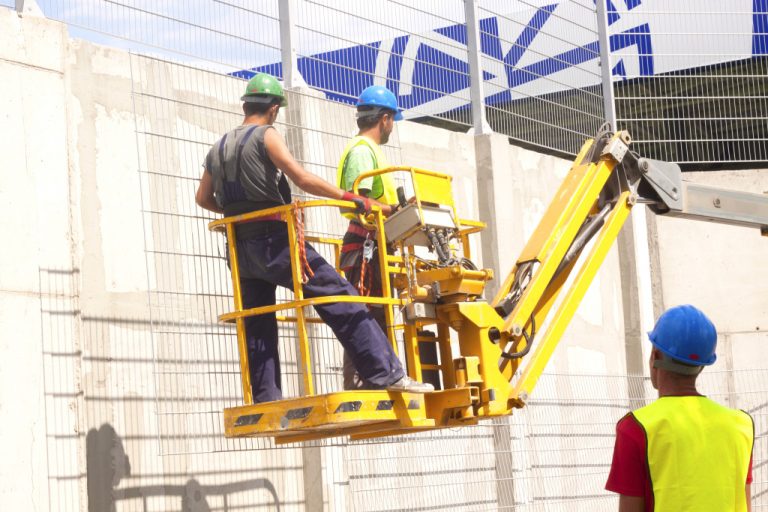- Make safety a priority from day one, create a safety plan and hire qualified workers.
- Invest in high-quality tools for better ergonomics and fewer mistakes.
- Protect your workers by providing appropriate PPEs, reasonable hours, and regular breaks.
- Utilize technology to monitor safety protocols and survey the area.
- Check for hazards regularly and seek professional help if needed.
Regarding construction, safety should always be the number one priority. With that in mind, here are five tips you can use to ensure the safety of your builds. Whether you’re a builder, trader, or property owner, these tips will help make sure your builds come out precisely as planned — and safely!
1. Make Safety a Priority from Day One
Safety needs to be considered right from the start of any build. This includes doing a thorough risk assessment at the planning stages and making sure everyone involved knows the risks associated with the project. By ensuring safety protocols are established from the outset, you can avoid costly mistakes and accidents down the line.
Create a safety plan
Once you’ve identified potential risks during the planning stages, it’s important to create a safety plan that outlines all necessary precautions for completing the project safely. This should include information about protective equipment, first aid procedures, emergency contacts, fire safety, and other relevant safety protocols. All workers should be informed about the safety plan before starting the project.
Properly trained and qualified workers
Having properly trained and qualified workers are critical for any construction project. Make sure that anyone involved in the build has the necessary certifications and qualifications to do their job safely and efficiently. Doing so will help ensure everyone on site is aware of safety protocols and can take the appropriate steps to protect themselves and those around them.
2. Invest In High-Quality Equipment

When it comes to construction equipment, quality should always take precedence over cost. Investing in high-quality tools and equipment will not only ensure that your builds are safer, but they’ll also last longer. This means fewer replacements down the road, saving you time and money in the long run. While some tools can be expensive, their safety and durability are worth the investment.
Using high-quality tools and equipment makes it easier to do the job correctly the first time. This helps minimize the potential for errors, which can lead to accidents or costly mistakes. Additionally, quality tools provide better ergonomics, meaning less strain on workers’ bodies over a long period. With more comfortable tools, your workers will be more productive, not to mention safer.
3. Protect Your Workers
It’s important for all workers onsite to wear appropriate personal protective equipment such as hard hats, goggles, gloves, and steel-toed boots when necessary. Not only does this help keep workers safe from potential injury, but it also ensures that all safety regulations are being followed correctly. Protecting your workers also goes beyond making sure they have the right PPEs. It’s also essential to provide your workers with reasonable hours, adequate breaks, and other considerations that will help keep them safe and healthy on the job.
Managing your worker’s schedules effectively will also help ensure everyone can work safely and efficiently. When workers are overworked or stressed, it can lead to mistakes that can put them at risk for injury. You’ll be taking steps toward keeping your workers safe from harm by providing regular breaks and ensuring that shifts don’t exceed the legal limit.
Choose good independent partners
Choosing the right contractor is another important factor in construction safety. You want someone with years of experience, a good reputation for quality work, and a commitment to safety protocols. This is especially important for large-scale commercial projects as the potential for injury or mistakes increases. By hiring experienced commercial mechanical contractors with a track record of success, you can rest assured that your project will be completed safely and efficiently. Professional contractors also have the resources to complete any necessary paperwork and ensure that all safety regulations are followed correctly.
4. Utilize Technology To Improve Efficiency And Safety

The use of technology for construction projects is an increasingly popular trend, as it helps to streamline processes and reduce the risks associated with construction work. Automated systems can help you monitor safety protocols on site and ensure they are followed correctly. For example, automated systems can track workers’ onsite hours and limit their access to hazardous areas. They can also be used to monitor site conditions, such as air quality, temperature, or noise levels, helping to ensure the safety of everyone involved in the project.
In addition, drones can be used to survey sites accurately, allowing workers to identify potential hazards before they become an issue. GPS tracking systems can also monitor the movement of personnel and equipment throughout the site. By utilizing advanced technology on construction projects, you’ll be able to reduce the risk of injury or accidents while making your builds more efficient and cost-effective.
5. Check For Hazards Regularly
Finally, it’s essential to regularly check for potential hazards on site before any work begins. This includes checking for loose wiring or faulty machinery that could harm workers if left unchecked. Checking regularly helps ensure that everything is up-to-date and running as it should be so potential hazards can be identified quickly and dealt with accordingly.
Seek professional help
If you’re unsure how to ensure safety on your construction projects, it’s a good idea to seek professional help. A qualified safety consultant can provide invaluable advice and guidance regarding creating a safe working environment. They can also assist with risk assessments and help put protocols into place to keep everyone involved in the project safe.
In Closing
As you can see, there are many steps you can take to ensure the safety of your builds. From investing in high-quality equipment to utilizing technology and checking for potential hazards regularly — following these five tips will significantly reduce risks associated with construction projects while increasing efficiency and productivity simultaneously! Taking care of these details now will give you peace of mind knowing that your projects are being completed safely according to industry standards without compromising quality or costing more than necessary.













